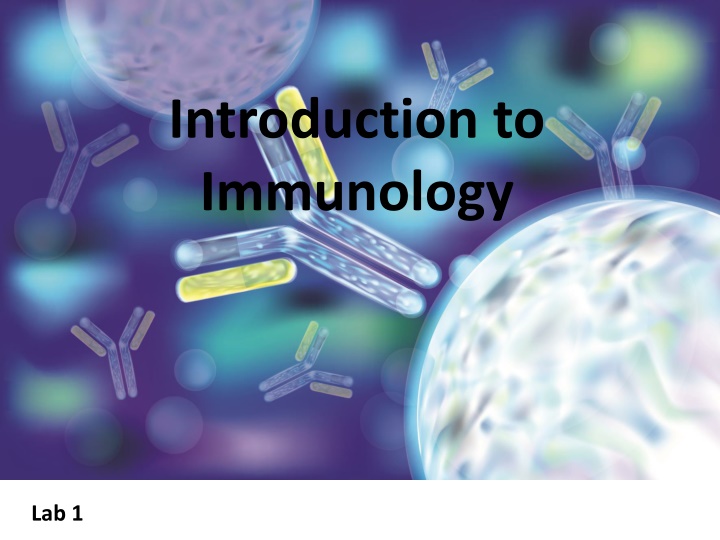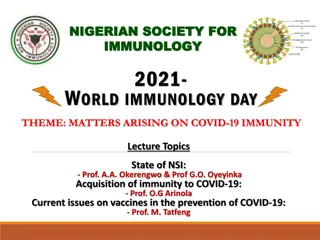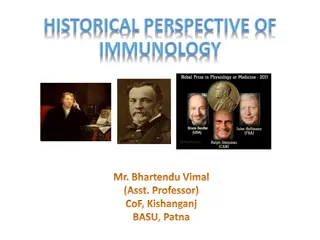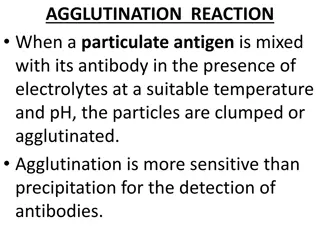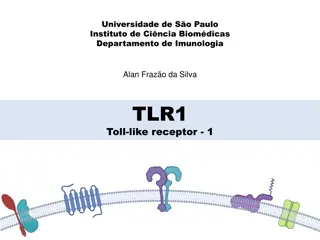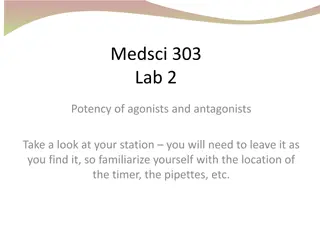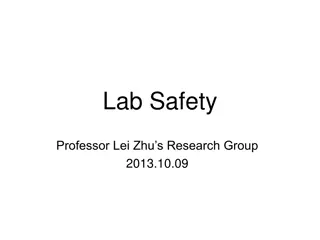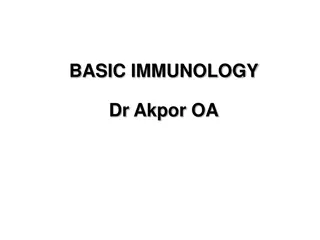Introduction to Immunology Lab 1 - What is Immunology?
Immunology is the study of the immune system, a crucial aspect of medical and biological sciences. It protects us from infections by detecting and distinguishing pathogens from healthy tissues. The immune system is a complex defense mechanism involving various biological processes and components such as lymphocytes, phagocytes, bone marrow, spleen, and lymphatic system.
Download Presentation

Please find below an Image/Link to download the presentation.
The content on the website is provided AS IS for your information and personal use only. It may not be sold, licensed, or shared on other websites without obtaining consent from the author.If you encounter any issues during the download, it is possible that the publisher has removed the file from their server.
You are allowed to download the files provided on this website for personal or commercial use, subject to the condition that they are used lawfully. All files are the property of their respective owners.
The content on the website is provided AS IS for your information and personal use only. It may not be sold, licensed, or shared on other websites without obtaining consent from the author.
E N D
Presentation Transcript
Introduction to Immunology Lab 1
What is immunology? Immunology is the study of the immune system and is a very important branch of the medical and biological sciences. The immune system protects us from infection through various lines of defense.
What is the immune system? The immune system is a host defense system comprising many biological processes within an organism that protects against disease. To function properly, an immune system must detect a wide variety of agents, known as pathogens, from viruses to parasitic worms, and distinguish them from the organism's own healthy tissue. structures and
What are the components of the immune system? The tonsils and thymus, which make antibodies. The lymph nodes and vessels (the lymphatic system): The lymphatic system is an important part of the immune system. The lymph nodes filter lymph fluid as it flows through them, trapping bacteria, viruses, and other foreign substances, which are then destroyed by special white blood cells called lymphocytes. Bone marrow: This is soft tissue found mainly inside the long bones of the arms and legs, the vertebrae, and the pelvic bones of the body. It is made up of red marrow, which produces red and white blood cells and platelets. The spleen, which filters the blood by removing old or damaged blood cells and platelets and helps the immune system by destroying bacteria and other foreign substances. White blood cells: These blood cells are made in the bone marrow and protect the body against infection. If an infection develops, white blood cells attack and destroy the bacteria, virus, or other organism causing it.
What are the cells of the immune system? Phagocytes These cells surround and absorb pathogens and break them down, effectively eating them. There are several types, including: 1. Neutrophils these are the most common type of phagocyte and tend to attack bacteria. 2. Monocytes these are the largest type and have several roles. 3. Macrophages these patrol for pathogens and also remove dead and dying cells. 4. Mast cells they have many jobs, including helping to heal wounds and defend against pathogens.
Lymphocytes: Lymphocytes help the body to remember previous invaders and recognize them if they come back to attack again. 1. B lymphocytes they produce antibodies and help alert the T lymphocytes. 2. T lymphocytes they destroy compromised cells in the body and help alert other leukocytes.
What are antibodies and antigens? Antibody (Ab): also known as an immunoglobulin (Ig), is a large, Y-shaped protein produced mainly by plasma cells that is used by the immune system to neutralize pathogens such as pathogenic bacteria and viruses. Antigens: are substances that cause an immune response in the body by identifying substances in or markers on cells. Your body produces antibodies to fight antigens, or harmful substances, and tries to eliminate them.
What is the innate immunity? The innate immune system is made of defenses against infection that can be activated immediately once a pathogen attacks. The innate immune system is essentially made up of barriers that aim to keep viruses, bacteria, parasites, and other foreign particles out of your body or limit their ability to spread and move throughout the body.
What is adaptive immunity? The adaptive immune system, also called acquired immunity, uses specific antigens to strategically mount an immune response. Unlike the innate immune system, which attacks only based on the identification of general threats, the adaptive immunity is activated by exposure to pathogens, and uses an immunological memory to learn about the threat and enhance the immune response accordingly. The adaptive immune response is much slower to respond to threats and infections than the innate immune response, which is primed and ready to fight at all times.
